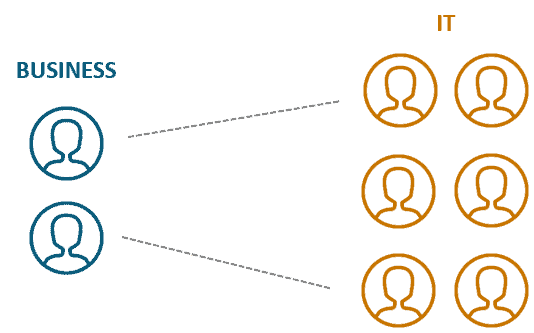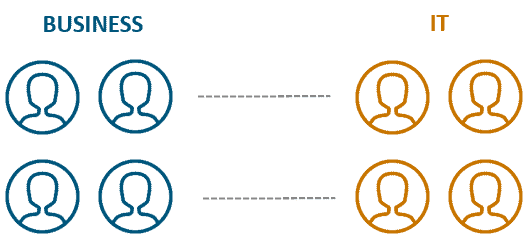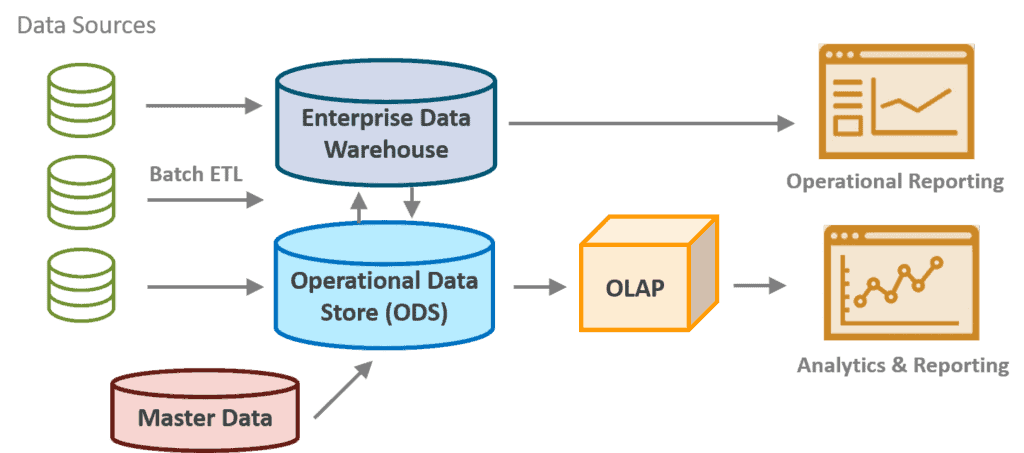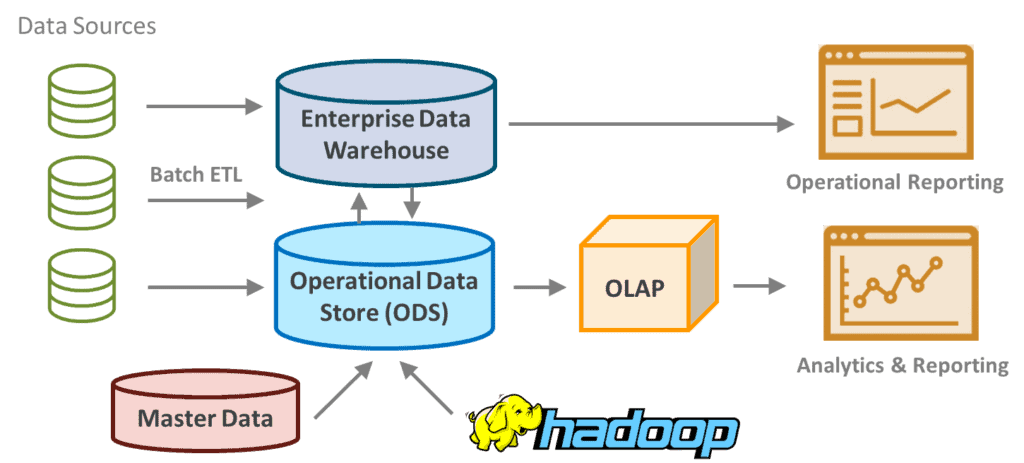BI & Analytics Organizational
Models and Architecture Are Changing
Modernizing your business to meet increasing demands requires both an evaluation of how business intelligence and analytics are organized in your company as well as how your data architecture is set up.
Article originally published June 2019
Organizational Models
The way we organize and distribute our business intelligence and analytics responsibilities are slowly evolving as businesses become more data driven than ever before. To understand this, we’ll go through three models of BI & analytics organization.
Traditional IT-Driven
The traditional strategic model is IT-driven. BI technology, data architecture, data transformation, and content development are primarily led by IT.
Business engagement is slim and is usually through a business unit sponsor as well as business analysts and end users.
Hybrid IT/Business
The most popular strategy among businesses today is the hybrid model. This model can take several forms, but commonly IT owns the BI technology platform, the data architecture and transformation. The business is primarily responsible for BI and analytical content.
In the hybrid model, sometimes IT is still involved in BI content such as enterprise reports, or reporting that is less analytical.
Business-Driven
Data, BI, and analytics are all owned and driven by the business itself with a business-driven strategy.
In this scenario, usually the scope of the analytics is departmental or line of business. Otherwise there is still usually some IT involvement for components like security, etc.
Which Model Should Businesses Use?
Depending on the business and situation, any one of these may work. However, a majority of business decisions are based on historical data and trend analysis. As we move forward, we’ll see a lot more people using the Hybrid or Business-Driven models over Traditional IT-Driven to fulfill their demands for self-service analytics.
A Brief Overview of the Data Warehouse and BI Architecture
As we are all probably aware of, the needs of companies today are far outpacing their requirements from just a few years ago. But in order to look toward the future with a modern approach, we have to look at what organizations have been doing for the last few decades in regards to their data warehouse and BI architecture.
It Starts with a Data Warehouse
A data warehouse (DW) is a place of storage and consolidation for an organization’s data and information that can come from multiple data sources. The data warehouse became popular in the 90’s as a fast, efficient alternative to batch reporting against siloed transactional systems. This enabled strategists to make critical business decisions based on the data gathered from the entire organization through Online Analytical Processing (OLAP).
For the last twenty years, OLAP and data warehouse architectures have remained relatively unchanged. This fact combined with the rapid speed of innovation in technology and need for instant, dynamic information has begun holding companies back digitally.
Then Came the Traditional BI Architecture
A typical BI architecture usually includes an Operational Data Store (ODS) and a Data Warehouse that are loaded via batch ETL processes.
Big Data Started to Change This Architecture
In the mid-2000s, a new buzz word came into play – big data. Having to deal with large amounts of data wasn’t a new concept, but now it had a name and began changing the traditional BI architecture. As companies scrambled to find out what to do with their big data problem, technologies like Apache Hadoop swooped in to take the load off their shoulders. Soon, Hadoop became synonymous with big data and many tried to augment or replace the data warehouse with a Hadoop-based solution.
But Hadoop is not a great fit for all big data use cases. It also requires specialized skills and a confusing array of open source software.
When Traditional Architectures Aren’t Cutting It
Though these architectures have been around and served organizations well for decades, they just can’t possibly keep up with the complexity and scalability needs of companies these days.
To see how Smartbridge is modernizing the BI and data warehouse architecture, download our free “Modern Data & Analytics Architecture with Azure” eBook!
Keep Reading: Modern Cloud Data Warehousing with Snowflake
Looking for more on data & analytics?
Explore more insights and expertise at smartbridge.com/data
There’s more to explore at Smartbridge.com!
Sign up to be notified when we publish articles, news, videos and more!
Other ways to
follow us:


